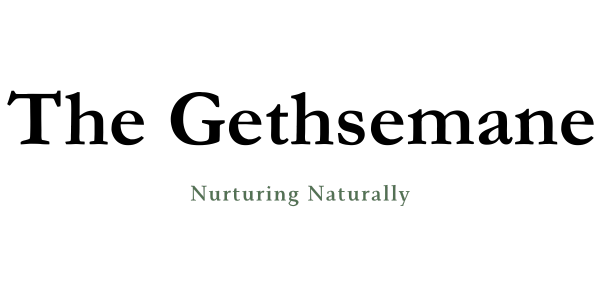WASHINGTON – With Memorial Day weekend kicking off the summer season, the Environmental Working Group is releasing its 19th annual Guide to Sunscreens®. This trusted, science-based guide reveals that almost four in five, or about 80 percent, of sunscreens still offer inadequate skin protection or contain potentially harmful ingredients, or both.
This year’s guide reviews 2,204 sun protection factor, or SPF, products – the most EWG has ever evaluated. Of those, 498 products meet EWG’s strictest criteria for effectiveness and safety.
“Wearing any sunscreen is much more important and offers better sun protection for your skin than not applying anything,” said EWG’s Acting Chief Science Officer David Andrews, Ph.D. “But not all sunscreens are created equal. EWG’s guide is a valuable and trusted resource that consumers can turn to every year to find the sunscreens that offer strongest broad spectrum protection without the use of concerning ingredients.”
Sunscreen helps prevent sunburn, premature aging and skin cancer, but outdated Food and Drug Administration rules and misleading marketing leave consumers at risk. That’s where EWG steps in with its guide, first launched in 2007. Every year EWG scientists cut through the advertising hype to analyze what’s actually in sunscreens, their safety, and their sun protection effectiveness.
Ingredients of concern
Undisclosed “fragrance,” which can include allergens or hormone-disrupting chemicals, is still widely used in susncreens, appearing in 36 percent of the products in the guide.
EWG is also highlighting concern this year over the increasing use of underregulated SPF “boosters” in sunscreens. The boosters may inflate a product’s SPF values without enhancing broad spectrum protection against the sun’s ultraviolet A or B, or UVA and UVB, rays.
Unlike Europe and Asia, where stricter rules govern UVA protection, the U.S. still permits the sale of sunscreens carrying inflated SPF numbers while offering little assurance of UVA protection against deep skin damage.
The increasing use of the booster ingredient butyloctyl salicylate, or BOS, in sunscreens is particularly notable. It is a common sunscreen additive advertised to improve texture, boost SPF ratings and stabilize active ingredients. But it may contribute to misleading information about a product’s sun protection. There is additional concern about its ability to absorb and metabolize in the body to salicylic acid.
“Even if a sunscreen delivers its labeled SPF, it may fall short by containing concerning ingredients,” said Andrews. “Our top-rated products offer balanced protection from UVA and UVB radiation.”
Spray sunscreens continue to be common, representing 26 percent of products in the guide. But they can be risky, because their ingredients are typically inhaled. They’re also often considered less effective than a lotion due to uneven coverage when applied outside.
Sunscreen improvements
It’s not all bad news when it comes to sun protection, as shown by the almost 500 products that meet EWG’s criteria for safer sunscreens.
A total of 63 sunscreens from 13 brands now also qualify to bear the EWG Verified® mark. Only products that meet EWG’s highest standards for safety, transparency and UVA/UVB protection bear the mark.
One of the biggest shifts in the sunscreen market is the growing demand for mineral-based products, which contain zinc oxide and titanium dioxide for UV protection. These ingredients are the only active sunscreen filters generally recognized as safe and effective by the FDA. This year’s guide finds 43 percent of sunscreens use one of these two ingredients, up from 17 percent, in 2007.
This year’s guide also shows that manufacturers are rapidly moving away from the use of the troubling ingredients oxybenzone and vitamin A.
Oxybenzone has high absorption through the skin and exposure is linked to potential health harms, including disruption of the hormone system, in addition to harmful effects on aquatic and marine ecosystems. EWG’s Guide to Sunscreens finds oxybenzone is now in just 9 percent of non-mineral sunscreens, down from a peak of 70 percent.
EWG cautions against use of sunscreen with vitamin A, which can degrade in sunlight, potentially accelerating rather than preventing skin cancer. It’s now in only two percent of sunscreens, plummeting from a high of 41 percent.
Protecting against the sun
Sunscreen is a vital part of protection from harmful sun exposure, particularly during the summer months, when people spend more time outdoors.
“Our guide helps consumers make informed choices,” said Jilly Senk, EWG’s Healthy Living Science associate. “Our scientists have taken the guesswork out of the search for broad spectrum sunscreens with less hazardous ingredients.”
That’s why the Guide to Sunscreens also offers important lists, including a selection of the top-rated recreational sunscreens, the safest for kids and babies, moisturizers with SPF and lip balms – those EWG scientists ranked the highest for their overall protection from UVA and UVB rays and other factors.
The guide also offers plenty of information about the history of sunscreen regulation, why many products and regulations in the U.S. fall short, and more.
###
The Environmental Working Group (EWG) is a nonprofit, non-partisan organization that empowers people to live healthier lives in a healthier environment. Through research, advocacy and unique education tools, EWG drives consumer choice and civic action.






:max_bytes(150000):strip_icc()/a-wild-jaguar-in-the-pantanal-is-watchful-while-laying-in-thick-vegetation-along-the-river-bank-of-t-520391160-30409cae6a054ef2b5142dad8c232487.jpg?w=150&resize=150,150&ssl=1)
